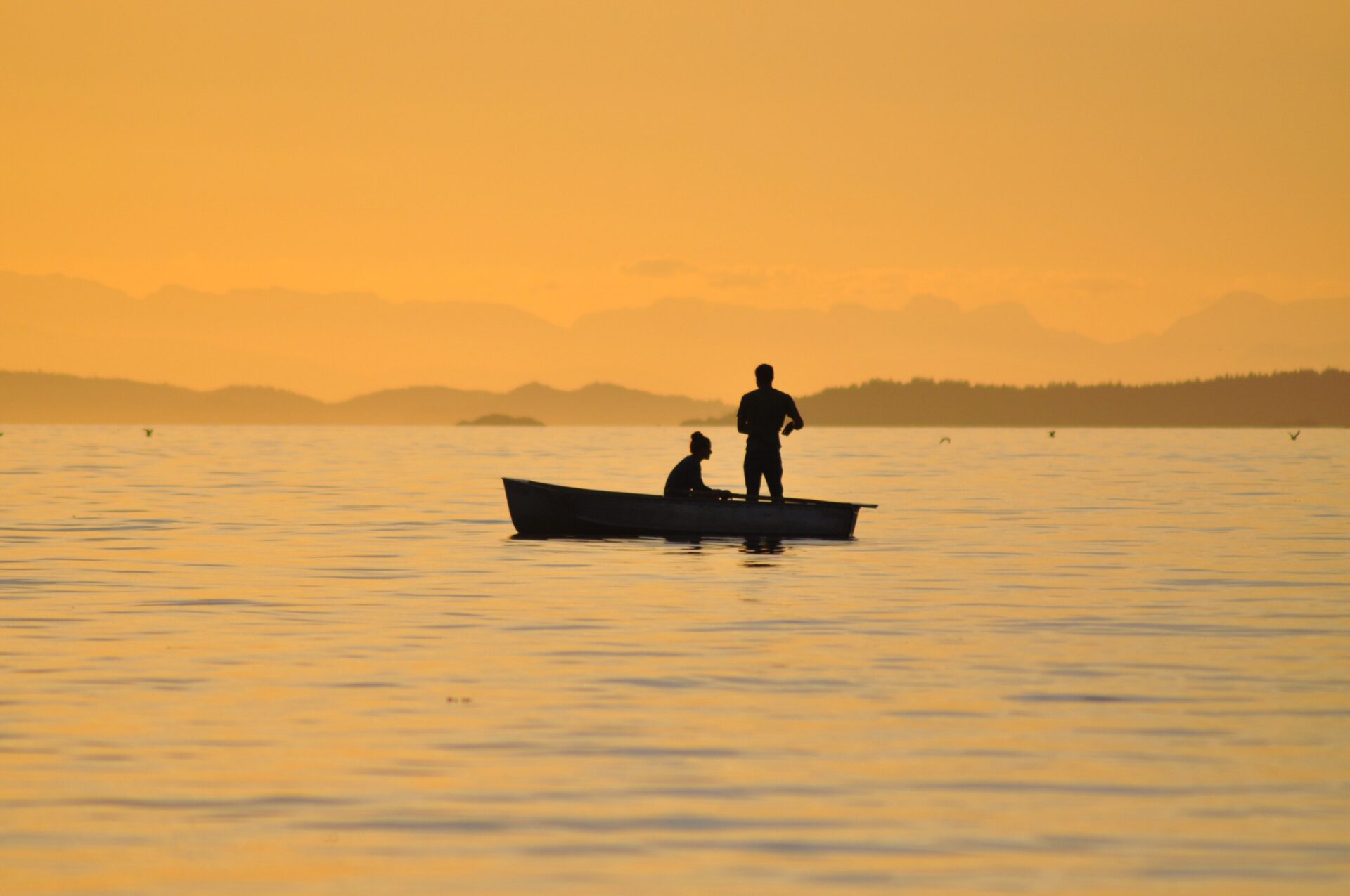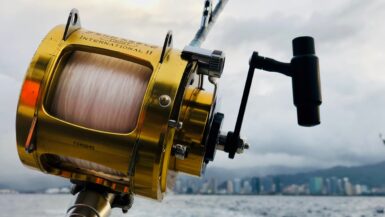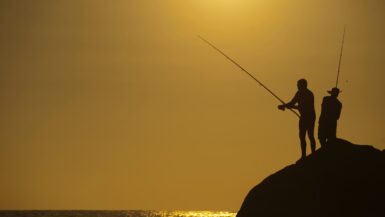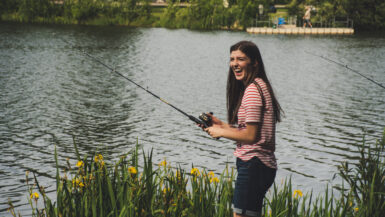Crappie are an interesting and versatile freshwater fish that many anglers enjoy for their flavor and fight. Crappie are found in rivers, lakes, and ponds, and can be caught easily with the right techniques and tips. In this article, we will discuss some fishing techniques and tips that can be used to target crappie in freshwater. We will cover topics such as bait selection, presentation techniques, rigging, and more. With these tips, anglers can catch plenty of crappie in no time. So read on and get ready to catch the most crappie of your life!
Essential Gear and Tackle
When it comes to fishing for crappie in freshwater, the right type of equipment is essential. A good quality spinning reel, rod, and line are the basics, and should be selected based on the type of fishing and lure you plan to use. Spinning reels come in a variety of sizes, so it’s important to find a reel that is appropriate for the size of the line you will be using.
Fishing Lures and Bait for Crappie
When it comes to lures, small spinnerbaits and jigs are popular for crappie fishing. Plastic baits such as worms, grubs, and soft plastics are also effective. Live bait such as minnows and nightcrawlers can also be an effective bait option. It’s important to experiment with different lures and bait to find which works best in the water you are fishing.
Hooks and Weights
Hooks and weights are two more pieces of essential gear when it comes to crappie fishing. Choose hooks that are small enough to match the size of the bait that you are using. Weights should be small enough to allow the bait to suspend in the water, without sinking too quickly.
Tackle Box
A good quality tackle box should be at the top of the list when it comes to essential gear for crappie fishing. It should be large enough to hold your lures, hooks, weights and other necessary tackle items. It’s also important to make sure that your tackle box is well-organized, so that you can find the items you need quickly and easily.
Extra Gear
In addition to the essential gear, there are other items that can be beneficial for crappie fishing. These include a stringer or cooler to keep your catch fresh, bait containers, net, rod tip protector, hemostats, and a pair of pliers. Having these items in your tackle box will make your crappie fishing experience more enjoyable.
Location and Time of Year
The best time to go fishing for crappie in freshwater is in the spring and fall. The water is cooler, and the fish are more active and feeding. Spring is the best time to target crappie in shallow areas, as they gather to spawn near shallow cover. During the fall, the crappie move to deeper waters to stay warm, so anglers need to be prepared to adjust their tactics to find success.
Best Locations for Crappie
When fishing for crappie in freshwater, it’s important to know what kind of habitat they thrive in. Look for areas with plenty of structure, such as weed beds, brush piles, drop-offs, and sunken logs. These structures provide hiding spots for crappie and also attract baitfish. The best time to target crappie in these structures is early in the morning or late in the afternoon.
Best Tackle for Crappie
Fishing for freshwater crappie is a great way to spend a day, but anglers need to be equipped with the right tackle to maximize their chance of success. A light spinning rod and reel combo, with a light line, is best for crappie. Jigs, crankbaits and small spinners are all effective baits for crappie.
Tips to Catch More Crappie
When fishing for freshwater crappie, there are a few tips to keep in mind. Use light tackle so you can detect even the slightest bite. Crappie can sometimes be shy, so you want to use natural-colored baits instead of bright colors. When targeting crappie in cover, cast your bait into the cover and let it sit as long as possible before retrieving it. Slow retrieves often produce the best results. Finally, remember to be patient – crappie will bite, but sometimes it takes some time.
Understanding the Feeding Habits of Crappie
Understanding the feeding habits of crappie is essential for successful freshwater fishing. Crappie are active predators and prefer to feed on smaller fish and crustaceans such as shrimp, minnows and small baitfish. They are also known to feed during the day and night, but their most active feeding time is near sunset, when the light levels are low. Knowing this information can help anglers determine the best time for fishing for crappie in freshwater.
Location is Important
Crappie prefer to feed in shallow, murky waters with standing timber, weed beds, fallen trees and other types of cover. By locating these areas, anglers increase their chances of finding and catching crappie. Knowing where the fish are likely to be at different times of day, or different times of the year, can also be helpful.
Effective Lures & Baits
Jigs, crankbaits, and spinners are among the most popular lures used to catch crappie in freshwater. Jigs offer anglers the added advantage of being able to adjust the depth of the bait in the water column, depending on the desired results. Natural baits such as worms, minnows and crayfish are also effective for catching crappie.
Tactics for Crappie Fishing
For anglers looking to catch crappie in freshwater, there are several tactics to consider. Trolling slowly with a jerk bait or spinner is a great way to cover a large area quickly and find the fish. Jigging or still-fishing with live bait is also popular, as is casting a jig or plastic lure along the edges of weed beds and into pockets of cover.
When fishing for crappie, it’s important to remember that they are often found in large schools, so it’s best to cast multiple baits and lures into the same area. The more anglers present a variety of baits and lures to the fish, the better the chances of a successful catch.
Presentation Techniques
Crappie fishing in freshwater is an exciting and rewarding hobby. If you are new to the sport, you will be keen to learn the best lures and baits for catching this tasty fish. Live baits such as small minnows, waxworms, and crickets are all effective, but artificial lures offer the prospect of a great catch with less effort.
Spinnerbaits are perhaps the most versatile of artificial lures for freshwater crappie fishing. They spin quickly, and the bright, shiny blades attract the fish. Jigs are another great lure for catching crappie, as they look like small insects or baitfish in the water. Finally, soft plastics such as tubes, worms, and grubs also appeal to crappie. When selecting the right lures and baits, keep in mind the size of the crappie – use smaller lures when targeting smaller fish.
Optimal Casting and Retrieval Techniques
For the best results, you should practice your casting techniques. For example, when using a spinning reel, use a platform that is slightly more than shoulder-height when casting. Start with a slow, steady retrieve, and experiment by changing the speed and action of your retrieve.
When using a baitcaster, hold your rod at a 45-degree angle. When you cast the bait, ensure that the lure and line touch the water first, before the rod. To get the most out of your retrieval and control the bait, use an angling technique known as ‘pumping’. This involves pulling the rod upwards, thus raising the bait from the bottom of the water, and then lowering it again. Vary the pace and use short, sharp jerks as you retrieve the bait.
Best Locations for Crappie Fishing
Crappie generally prefer shallow, slower-moving waters, as well as areas with plenty of vegetation and cover such as overhanging trees and vegetation. Look for areas where the water is still and the bottom is muddier. If you can find a structure such as a dock, bridge, or sunken tree, this is a prime spot for crappie fishing. When fishing in deeper water, locate the areas where the crappie are concentrated and keep your retrieves slow and steady.
Tackle and Equipment
When it comes to tackle and equipment for crappie fishing, you don’t need to invest in any expensive or specialized gear. A light spinning rod with a fast action and a sensitive tip, matched with a spinning reel that has a good drag system is ideal. As far as line, use a light monofilament line with a strength rating of 4-6 pounds. This will allow you to detect strikes in more subtle bites. If you are using a baitcaster, you can use a heavier line, around 8-10 pounds.
No matter what techniques and equipment you choose, with some patience and a bit of luck, you will be able to find success when fishing for crappie in freshwater.
Safety Precautions
When fishing for crappie in freshwater, there are certain pieces of essential gear you must have. First, you’ll need a valid fishing license as well as a good spinning reel or baitcasting reel, depending on the size of the crappie you are after. A medium-weight rod is preferred for most freshwater crappie fishing. You’ll also need a good selection of jigs and lures, depending on the type of bait you’ll be presenting to the crappie. And, of course, a cooler with snacks and drinks is always a must.
Spotting the Crappie
In order to successfully catch crappie, you must be able to spot them. Look for logs, stumps, or any other type of cover in the water. Crappie will use these in order to hide from predators, so it’s likely that you’ll find some hiding here. You should also check out the edges of any sunken islands or other structure in the water. Crappie like to lurk around the perimeter of these structures to ambush their prey.
Safety Precautions
When fishing for crappie in freshwater, it’s important to take safety precautions. Always wear a personal flotation device while fishing. Be sure to check the weather before you go out and don’t venture out into water that is too deep or too dangerous. Make sure someone else knows where you plan to be and when you plan to return. It’s also important to use the right baits, lures, and hooks in order to prevent the potential overharvesting of the crappie population.
Agile Reeling
When a crappie has taken the bait, you must be agile in setting the hook and reeling them in. Crappie are known for their speed and agility, so you’ll need to be quick and steady on the rod. Start with a steady and slow retrieve, then increase the speed of the retrieve if necessary. Work to keep the line tight and keep an eye on the line for any indications of biting.
Storing the Catch
Once you have successfully caught your crappie, you must store them in a way that will help preserve the freshness of the catch. If you plan to keep the catch for later use, put the crappie into a cooler with some ice. This will help reduce the temperature and pH levels of the fish and keep them fresh. If you plan to release the fish, make sure to handle them with care and store them in water that is the same temperature of the water they were caught in.
Conclusion
Fishing for crappie in freshwater can be an incredibly rewarding experience for any angler. By understanding the behavior of these fish, using the right kind of bait, and increasing the chances of success by using multiple hooks, anglers can find success in fishing for crappie. Anglers should also make sure to have the right gear and take the necessary safety precautions to ensure a successful and enjoyable fishing trip. With the knowledge and tips outlined in this article, anglers should have no trouble catching a delicious reward of crappie.





Leave a reply